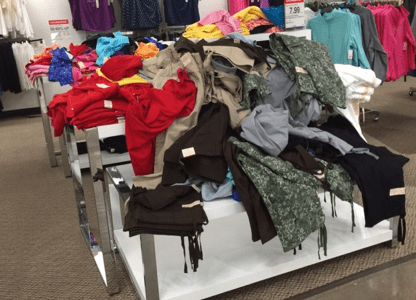It takes a mere second and can actually make someone’s day. Smiling is probably the most underrated gesture we can bestow upon one another. Think about how many people you interact with during the day. Or maybe people you just walk by. How easy would it be just to smile at them? You never know what kind of day someone is having so why not try to make it just a little better.
A smile can also do wonders for your business and the customer experience. Many companies strive to achieve a great product or service but forget the other side. Customers want to buy a complete package that includes your product and the customer service that comes with it; this experience includes the sale, purchase, and post-sale. Your goal is not just getting your customer to buy and go, but that they will return and bring more customers with them.
The simple action of smiling can have a dramatic impact on the way you relate to a customer and the impression that this will give about your brand. No matter whether you interact with a client in person, by phone, live call, chat or email, a good attitude will always be useful.
What your smile can do to your customers
- Studies have shown a good smile can increase confidence by up to 10%.
- It helps build a good first impression of your business; a customer will always prefer to do business with someone who is happy.
- Smiling improves your mood and therefore the attitude in which you face everyday situations, including your sales work and customer support.
- A smile is contagious and humans tend to copy emotions, so a good attitude on your part can improve your customers as well.
The smile during phone support
Did you know that smiling on the phone can help you reflect a positive attitude? Customers can tell, even over the phone, what kind of mood you are in. A startup company that offers internet phone calls explained; “Most of our sales and support processes are managed by phone contact, so we can tell you from our experience that our customers know when we smile and that’s why we do it. In fact, many customers gave us great feedback about our customer service and it all starts with a smile.”
How do you measure the business benefits of a smile?
It’s no secret who does customer service the best—Trader Joe’s, Chick-fil-A and Southwest Airlines—and you will rarely see an unhappy employee. These companies go above and beyond to give every customer a memorable experience.
QuikTrip Corp., a Tulsa, Oklahoma based chain famous for its in-house analytics and memorable customer service, just clinched the 2019 CSP Intouch Insight Mystery Shop, their fourth win in the program’s 15-year history. The study includes both a covert and a revealed audit, with shoppers sizing up 10 participating brands on everything from greetings to gas-island cleanliness.
Chet Cadieux, chairman and CEO of QuikTrip, says, You can’t solve everything with math,” he says. “It just so happens that … you can use analytics to hire the right people to begin with. And if you hire friendly, sincere people, they’re generally, on most days, going to be friendly and sincere to the people they’re taking care of.”
84% of QuikTrip shoppers agreed that they were greeted in a courteous manner, placing the chain nearly 20 percentage points ahead of the average. Another measure of QuikTrip’s customer-service strengths is how well it scored on the question “Would you recommend this store to others?” Based on the Net Promoter Score, a metric that measures consumers’ loyalty to a brand by having them rate their willingness to recommend it on a scale of 1 to 10, QuikTrip received more 9s and 10s than any other retailer.
That’s significant, says Cameron Watt, president and CEO of Ottawa, Ontario-based Intouch Insight, which conducts the mystery shop on CSP’s behalf. In the CSP Intouch Insight Mystery Shop, shoppers are not necessarily regular customers of the brands they are visiting, Watt says. But the fact that QuikTrip scored so high with these shoppers is considerable, “because you create customer loyalty one customer at a time,” he says.
“If a person goes there and they enjoyed the experience enough at your brand, even though they usually shop at another brand, and they’d be willing to recommend you, I think that would be very highly correlated to your ability to drive customer loyalty,” Watt says.
For its part, QuikTrip is most interested in how its customers weigh the individual variables of the c-store shopping experience. Its internal mystery shop assesses employees’ ability to hit these needs, and a large percentage of their compensation is based on their performance in this measure. Consumers’ expectations for c-store service may be modest, but for a retailer to consistently hit the mark on friendly and fast with nearly every transaction is a triumph. Ensuring a high batting average means hiring right the first time.







